- Reclamation
- News & Multimedia
- News Stories
- Guernsey North Spillway Gate Gets A Facelift
Guernsey North Spillway Gate Gets A Facelift
Written by: Jay Dallman, WYAO
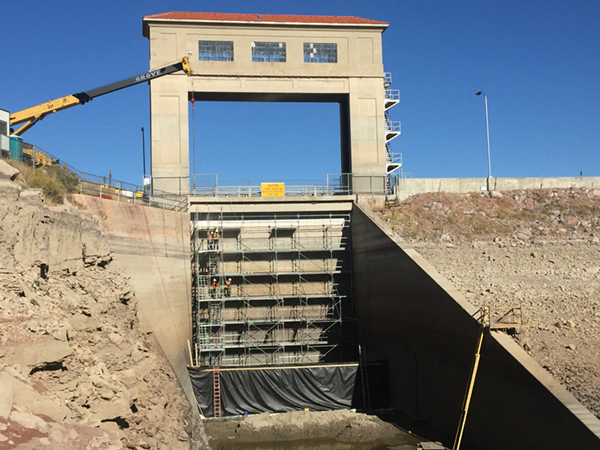
Upstream side of spillway gate with contractor's scaffolding.
The main spillway gate at Guernsey Reservoir was recently refurbished. Guernsey Reservoir is the furthest downstream Bureau of Reclamation reservoir on the North Platte River in Wyoming. The 45,000 acre-foot reservoir can release around 1,200 cubic feet per second (cfs) through the power plant, but higher releases require the use of the north spillway gate.
The gate can be raised to allow water to discharge between its lower edge and the fixed crest of the dam spillway. The Stoney gate is raised and lowered in a slot that was constructed between the spillway piers of the dam. In its fully raised position, the gate is supported in the superstructure of the spillway gatehouse. A winch and counterweight system is used to raise and lower the gate. When the gate is in motion, it bears upon sets of cylindrical steel rollers called roller assemblies or roller trains.
In 2007, inspection teams noticed that the gate coating had significantly degraded since the last coating replacement in 1983 and the roller trains were showing serious deterioration, especially in the four lowest roller trains. It was determined that edge effects of the water flowing under the spillway gate caused the rollers to rotate in place which created wear on the connecting links, bushings, and rollers comprising the roller train assembly. Recommendations were made, as a result of the inspection, and refurbishment of the spillway gate was added to the WYAO Replacements, Additions and Extraordinary Maintenance (RAX) list.
Design by Reclamation’s Great Plains Region and Technical Service Center (TSC) engineers on the refurbishment and recoating to North Gate began in 2012. TSC engineers came up with a design for deflector plates to be installed on the spillway walls directly upstream of the gate to address the problem that caused a majority of the damage to the lower roller trains. These plates will divert the water toward the center of the gate, so the high pressure flows passing underneath the gate will not directly strike the roller trains.
Great Plains Regional Procurement executed a contract for the repair work with Lillard and Clark Construction Co. out of Denver, CO. and the work was scheduled for the 2016-2017 winter season. Since the contract work needed to be done under dry working conditions, Guernsey Reservoir was emptied by the end of the irrigation season and flows from Glendo Reservoir, 22 miles upstream, were discontinued for the winter. The contract specified that the contractor must finish the work and have the gate back in service by April 15th so that normal water deliveries could be made for the 2017 irrigation season.
The contractor began removing the roller train assemblies in October 2016. There were a total of 12 roller trains, six per side, which needed to be removed from the gate for inspection and repairs. The removal of the roller train assemblies required coordination and assistance from Guernsey Power Plant maintenance staff, as clearances needed to be placed and removed and the gate had to be moved up and down many times to allow the necessary access to the gate surfaces and roller trains.
The four lowest roller trains were the first to be removed. They were inspected at the contractor’s on-site shop by contractor and Bureau personnel. All four of these were found to have significant material loss and damage that required new roller train frames to be fabricated from stainless steel material. The upper roller trains were removed, disassembled, frames sandblasted, and roller train assemblies inspected. New bushings, roller pins, and link securing pins were installed on all of the upper roller trains. The lower 24-feet of roller beam wear plate was warped on both sides of the gate which required replacement. New stainless steel wear plates were installed and voids between the new wear plate and existing roller beam were grouted. New rollers were fabricated from 400-series stainless steel.
Sandblasting of the gate to remove the corrosion and remaining coating began in November 2016. The removal of the coating and corrosion helped for inspection of the rivet heads on the gate. This gate contains an estimated 20,000 rivets. The contractor replaced 635 of the most severely corroded rivets with Grade-5 bolts and matching nuts. Seal welding of the bolt heads was performed to create a water tight seal to prevent leakage and future corrosion problems. Weld repairs were made to areas of the skin plate and structural members of the gate that showed a material thickness loss of more than 25% of the original thickness.
Great Plains Region Loveland Construction Services Division and Wyoming Area Office Project Management provided the oversight for the project, including the delegated Contracting Officer’s Representatives and full-time inspector services. At the time of the article, the contractor was on schedule to have all the repair and recoating work completed by the April 15th deadline. The gate refurbishment work will provide benefits to water and power customers as well as downstream entities by assuring the continued reliable operation of the Guernsey North Spillway Gate.
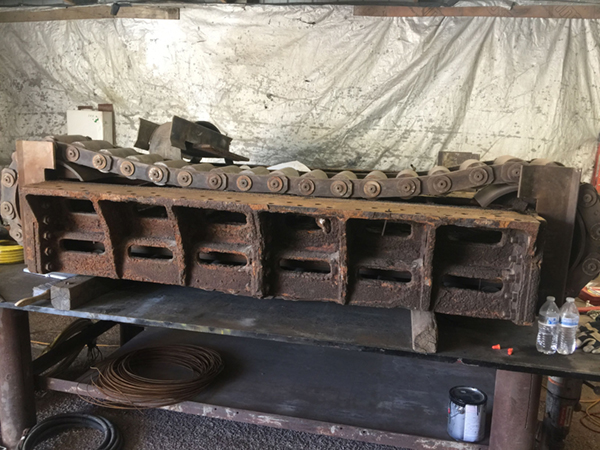
Gate leaf and roller train after removal.
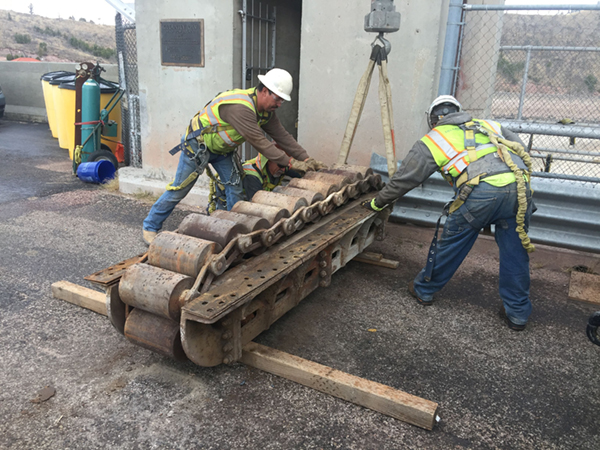
(Left) Workers inspecting roller train after removal.
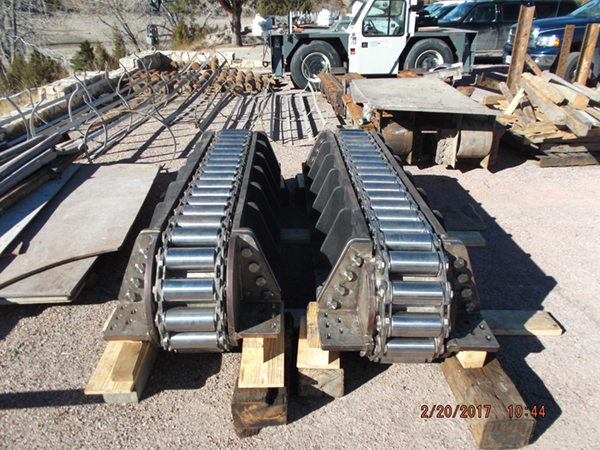
(Right) New stainless steel roller trains.
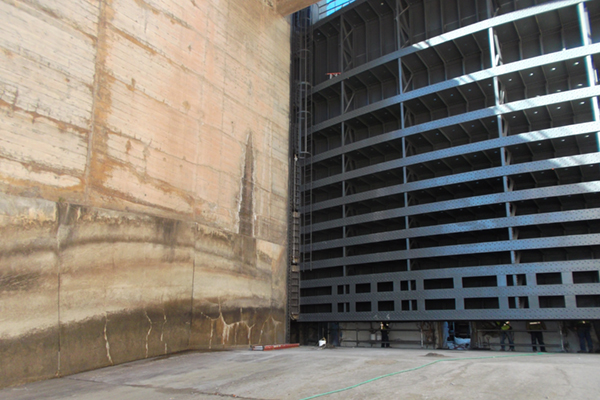
Downstream side of refurbished gate.
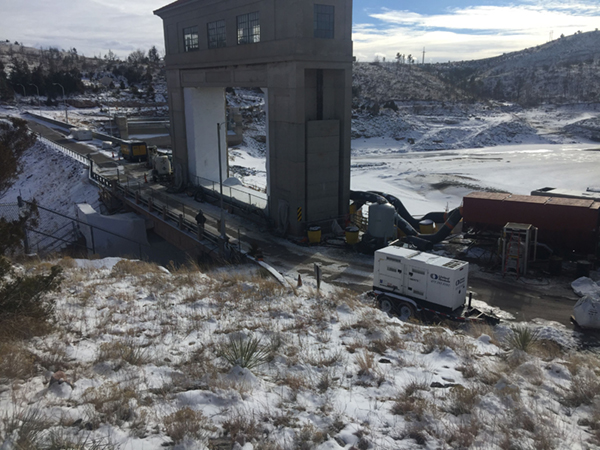
Guernsey Spillway gatehouse with empty reservoir in background.
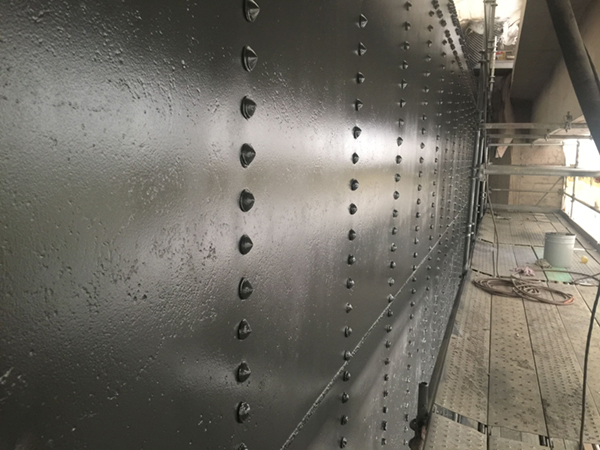
Newly refurbished gate section.
Published on May 23, 2017

